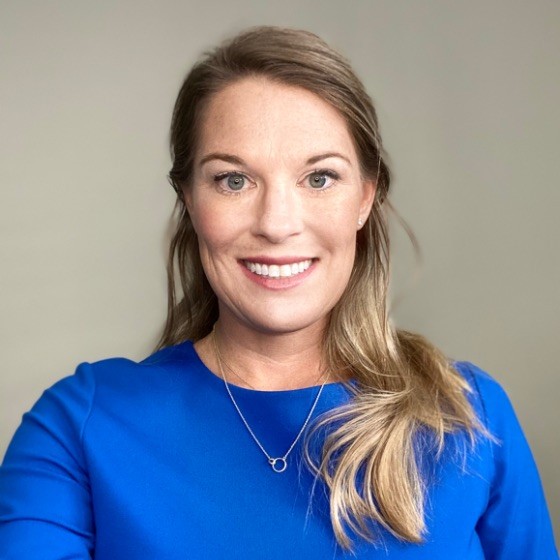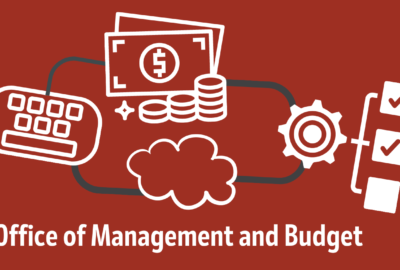Grants procurement pilots demonstrate speed to modernization
Andrea Sampanis, the acting director of the Grants QSMO in HHS, said her team helped three small agencies adopt award management systems more easily.
The Grants Quality Service Management Office over the last year helped several micro agencies buy award management services.
This pilot was part of how the QSMO is crawling before it tries to walk or run with larger agencies.
Andrea Sampanis, the acting director of the Grants Quality Service Management Office in the Department of Health and Human Services, said the procurement pilots with AmeriCorps, the Inter-American Foundation and the Northern Border Regional Commission opened the door to bigger possibilities to modernize federal grant services.

“We worked with them to explore the vendors on our Catalog of Market Research, making sure they were ready to meet their needs and helping to support them through the procurement process,” Sampanis said on Ask the CIO. “IAF and NBRC are live, on target and on budget, which is not an easy thing to do. AmeriCorps is expected to go live this fall. Huge kudos to these three agencies, as they were prepared to be good customers, willing to accept the system as-is and supported by great leaders in their chief information officer and chief procurement offices. Their grants teams came together to support a great vendor product from our Catalog of Market Research.”
While the AmeriCorps, the Inter-American Foundation and the Northern Border Regional Commission are considered micro agencies, the amount of money each of them awards through grants is anything but small. Sampanis said the AmeriCorps is more like a medium-sized agency when looking at the amount of money it awards through grants. In fiscal 2024, for example, the agency expects to award $577 million in grants.
The Inter-American Foundation and NBRC are much smaller with IAF, awarding about $145 million and about $50 million in grants, respectively.
Grants QSMO aims to speed acquisition
While these three agencies don’t reach the billions HHS or the Education Department or the NASA hand out, Sampanis said demonstrating how the procurement assistance pilot works opens the door to improve and expand the QSMO’s efforts.
The QSMO marketplace current has approved seven grants management system providers and is in the middle of conducting market research to expand its services.
“We have one quote that says having access to Grants QSMO market research puts you 1,000 steps ahead in your procurement. It’s our goal to speed up the acquisition process and give agencies more buying confidence as they are pursuing a vendor on our catalog. The vendors on our catalog are selected to support meeting grants standards and align to 2CFR 200 requirements,” Sampanis said. “It just lets them really focus their attention on a fewer number of providers to really say, ‘Hey, this solution is purpose built for grants. It’s an award management solution that is software-as-a-service and very configurable.’ It should feel easy. They don’t have to go and renegotiate a contract.”
The QSMO also works with the agency’s CIO and security leadership, helps develop performance work statements and serves as advisors during the entire acquisition phase.
“I always encourage agencies to meet with all the vendors on our Catalog of Market Research to understand what’s out there and share their specific needs. I think they learn a lot about themselves by talking to the vendors,” Sampanis said. “I helped them all the way through the pilot because I’m learning a lot. Every time I hear a contracting officer ask a new question, I think, ‘hey, that’s something I need in my catalog because that’s true.’ I always say our goal is to speed up an agency’s acquisition and give them buying confidence.”
HHS has led the Grants QSMO since January 2021 and has been building its services over the last few years.
With the Office of Management and Budget finalizing the update to the governmentwide grants guidance under 2 CFR earlier this year, standardizing certain key areas like notices of funding opportunities and overall trying to expand access to more than $1.2 trillion in grants and cooperative assistance agencies pay out each year, Sampanis said the QSMO is ready to expand its services and offerings.
Two common drivers of grants modernization
Having that baseline understanding and confidence in the marketplace is a key factor in success, said Wagish Bhartiya, the chief growth officer for REI Systems, which helps agencies modernize their grant systems.
Bhartiya said there are two basic drivers of grant modernization. The first is budget and second is technology.
“There has been a greater focus on budget and how much of our budget goes towards grant funding and how that funding is being deployed? How much of that is serving management processes, some of the overhead aspects of grant management, which will exist inherently, versus how much should be deployed into the community? That analysis, I think, is getting more acute,” he said. “The technology itself has evolved and shipped in a way that, I think, is much more possible now to be thoughtful about performance and mission. The technology is enabling some of this some of these questions to be asked because we now have the potential and the power to look at it for the first time.”
These two big trends are part of how grants providers are shifting their mindsets away from being so compliance focused to spending more time and money on measuring and ensuring outcomes.
“There’s all these dollars flowing through our grant programs so we need to start to think just as much about the downside, protecting from a compliance and a risk mitigation perspective, as the upside into the mission impact in terms of what are the tangible and successful outcomes,” Bhartiya said. “The other big theme is customer experience and user experience, and now the grantee experience.”
He said this updated point of view is part of why many grant providers are more willing to change today than ever before. He said this means the singularity of the way grants management worked over the last few decades is going away.
“Every grant program thinks they’re a snowflake and they think they’re special or unique and actually bespoke. But when you zoom out, you see that actually 85% of what a grant making agency does is essentially the same in the core lifecycle design,” he said. “Convincing them that they don’t need to make everything bespoke and tailored to the Nth degree because they can leverage best practices, use what’s worked for other agencies because there’s a chance to reduce the burden on their staff and on the recipient community is part of the challenge.”
Bhartiya added that the benefits of an end-to-end system, that’s in the cloud are becoming more clear to agencies.
Copyright © 2024 Federal News Network. All rights reserved. This website is not intended for users located within the European Economic Area.
Jason Miller is executive editor of Federal News Network and directs news coverage on the people, policy and programs of the federal government.
Follow @jmillerWFED








